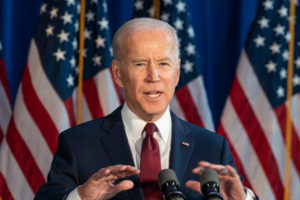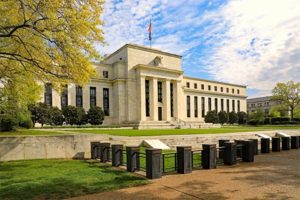Proposal to Cut Student Loan Interest Rate to Near-Zero Percent
Today, more and more attention is being paid to the $1.1 trillion in outstanding student loans owed by more than 38 million American borrowers.
That’s because student loan debt now exceeds credit card debt for the first time. Also, there’s mounting evidence that student loans are beginning to crowd out other types of borrowing and spending, and most importantly, eating into the housing and auto markets – two key traditional drivers of economic growth.
The federal government is attempting to meet this looming crisis on two fronts: Modify private student loans, much like mortgage modifications; and slash the interest rate on federal student loans to near-zero percent.
Cut Student Loan Interest Rate to Near-Zero Percent
Senator Elizabeth Warren (D-Mass.) this week introduced the Bank on Students Loan Fairness Act, her first piece of stand-alone legislation.
The aptly titled bill would require the student loan interest rate on all new subsidized Federal Direct Stafford Loans, which the government pays the interest while the student is still enrolled in school, set at 0.75 percent — the same rate the Federal Reserve offers to the nation’s biggest banks.
In offering her bill, Warren pointed out that the federal government generates a profit of more than 36 cents for every dollar lent to student borrowers. The Treasury is expected to earn $33.5 billion off student loans made during the 2013 fiscal year, according to the Department of Education’s budget.
“We shouldn’t be profiting from our students who are drowning in debt, while we’re giving a great deal to the big banks,” Warren said on the Senate floor. The average student loan debt is currently $26,800.
While it’s highly unlikely that Congress will agree to Warren’s low-ball gambit, the senator has laid down the gauntlet, challenging her colleagues to confront the looming July 1st deadline when subsidized Stafford Loan rates are set to double from 3.4 percent to 6.8 percent.
If Congress refuses to act, incoming college freshman could end up paying $5,000 more for the same student loans previously taken out by their upperclassmen, but at the much lower rate.
Refinance Private Student Loans
The Student Loan Affordability report, released this week by the Consumer Financial Protection Bureau (CFPB), contains proposals that seek to modify private student loans.
The report outlines several options it wishes private lenders to explore and potentially endorse, including: Interest rate reductions, term extensions, principal forbearance, principal reductions and possibly rolling over all private student loans into the federal student loan portfolio.
While private student loans account for only 15 percent of all student loans, they comprise 80 percent of all high-debt loans, which are those above $40,000.
But unlike federal student loans issued by the government and regulated by the Department of Education, private lender loans don’t allow for repayment options and usually carry higher interest rates.
These proposed modifications would help both consumers and lenders forestall default, much like restructuring federal student loans when the borrower is having trouble repaying them.
Congress Must Act Quickly on Debt Proposals
Warren’s challenge is a bold one.
If Congress chooses to turn its back on a generation of student borrowers, while maintaining the same financial institutions that helped crash the economy, it would send an unmistakable signal regarding where its priorities lie.
A few weeks ago, Congress responded within days to the complaints of airline passengers who endured travel delays after the sequester had reduced the number of federally paid air traffic controllers. A hastily passed bill allowed the Federal Aviation Authority to free up funds designated for airport construction in order to keep the number of controllers high enough to prevent future airport snafus.
Congress now has less than two months to respond to a much greater threat to the economy, not to mention the futures of millions of young Americans. When other interest rates remain low, there seems little justification to maintain relatively high rates for those least likely to afford them.
Will Congress act, or will it look at the calendar, see that school is out, and just go home for the summer?
Sources:
- Elliot, P. (2013, March 28). Student Loan Interest Rates to Double July 1. Retrieved from http://www.huffingtonpost.com/2013/03/28/student-loan-interest-rates-double-2013_n_2973536.html
- United States Senate. (n.d.). Bank on Students Loan Fairness Act. Retrieved May 9, 2013, from http://www.warren.senate.gov/documents/BankonStudentsBillText.pdf
- Brown, M. & Caldwell. S. (2013, April 17). Young Student Loan Borrowers Retreat from Housing and Auto Markets. Federal Reserve Bank of New York. Retrieved from http://libertystreeteconomics.newyorkfed.org/2013/04/young-student-loan-borrowers-retreat-from-housing-and-auto-markets.html
- The Institute for College Access & Success. (2012, October 18). The Project on Student Debt. Retrieved from http://www.ticas.org/files/pub//Release_SDR12_101812.pdf
- Consumer Financial Protection Bureau. (2013, May 8). Student Loan Affordability. Retrieved from http://files.consumerfinance.gov/f/201305_cfpb_rfi-report_student-loans.pdf
- You will need Adobe Reader to view the PDF Download Adobe Reader


















